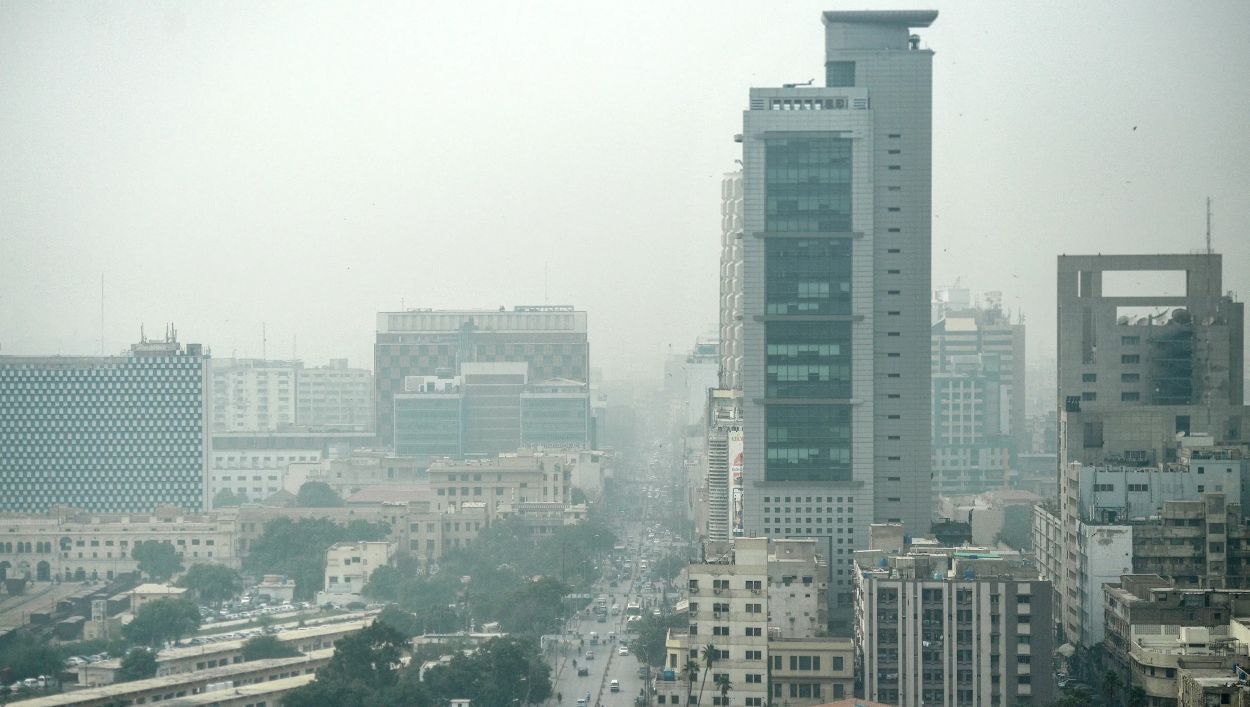Karachi is ranked as the most polluted city globally during the cold season, experiencing toxic PM2.5 levels 32.4 times above the World Health Organization (WHO) recommendations.
Residents of Karachi, Pakistan’s financial capital, experienced severely deteriorated air quality on Tuesday morning. The Swiss air quality monitor IQAir reported the city’s Air Quality Index (AQI) at 237, classified as “very unhealthy.”
The city measured PM2.5 levels at 162 µg/m³, surpassing WHO safety standards. Cold weather frequently worsens these elevated pollution levels, which can hold smog and dust particles closer to the surface.
According to the Pakistan Meteorological Department (PMD), the minimum temperature in Karachi dropped to 10.5 degrees Celsius over the past 24 hours. Forecasts predict temperatures will fluctuate between 9°C and 11°C in the coming day.
Read: Karachi Set to Launch Electric Vehicle Taxis: Sharjeel Memon
The Met Office noted that with 41% humidity and winds from the northeast at eight to 10 kilometres per hour, the maximum temperature is expected to stay between 25°C and 27°C.
This phenomenon of worsening air quality during colder months is not unique to Karachi. Lahore, Punjab’s capital, also suffers from poor air quality, ranking as the fifth most polluted city globally with an “unhealthy” AQI of 194. Following closely are Dhaka, Bangladesh, with an AQI of 210; Wuhan, China, at 208; and Delhi, India, at 204.
Each winter, emissions from low-grade fuel used by factories and vehicles and crop burning create dense smog exacerbated by cooler temperatures and sluggish winds. The smog affects Punjab and spreads to Karachi.
Read: Lahore Named World’s Most Polluted City as Smog Crisis Worsens
The WHO has highlighted the severe health risks associated with prolonged exposure to polluted air, including strokes, heart disease, lung cancer, and respiratory diseases.






